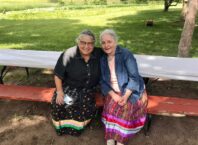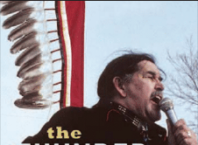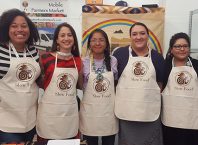On November 6, Minnesotans will have the opportunity to cast their ballots for many important decisions. One decision that is most important to American Indians is the decision to vote no to the question of photo ID on the ballot. The decision of whether to amend the state constitution to require presenting a government-issued state photo identification to exercise the right to vote is one that will negatively impact American Indians.
When a person who maintains a photo identification card with updated residential information reads the question of photo ID on the ballot, it sounds fair. What’s hidden behind the question is blatant oppression and a change in law that will effectively disenfranchise American Indians, other people of color, and many others from voting in future elections. Among those faced with the brunt of the financial burden of a so-called "free" identification card will be low-income people, elderly voters, students and others who move frequently, homeless people, and people with disabilities.
It is no news to American Indian people in Minnesota that the poverty rate among American Indians is high – according to MNCompass, over 40 percent of American Indian individuals in the state live below the poverty level, the highest poverty rate among all groups. Of all racial and ethnic groups in the state, American Indians also experience the highest rate of disability (of those ages 18-64, nearly 22 percent live with a disability).
The parts of the state where the largest populations do not currently have valid photo ID are those with significant American Indian populations, like the Leech Lake Band of Ojibwe whose territory encompasses four counties (Cass, Hubbard, Beltrami, and Itasca). Voters seeking to obtain a "free" government-issued ID will face substantial financial burdens in doing so, taking into account the costs of gas and lack of public transit, the time away from work, and the costs of childcare.
If voters approve the amendment, American Indian communities and rural Minnesota citizens will be burdened with obtaining and presenting a photo ID more so than citizens who reside in metropolitan areas, where public transportation is an option. An American Indian citizen in rural Minnesota who does not own a vehicle or does not have the money for gas is unlikely to vote. Distances can be daunting – a resident of the city of Bena must drive 160 miles round trip to the county seat in Cass County located in the city of Walker, MN to obtain ID or to verify identity under provisional voting.
For American Indian people living in the small communities of Indian reservations in Greater Minnesota, the voter ID amendment would add to already existing barriers to voting. Townships/precincts with fewer than 400 registered voters now have the option of being a mail-in ballot precinct. This option is not without complications. For example, the town of Ball Club, where there are well over 400 citizens in the township and the polling site was located in the American Indian community, is now a mail-in ballot precinct. The result was a significant change in voting procedure and one that resulted in leaving out the voices of American Indian citizens, and taking away the chance to come together in a familiar community location. For some rural voters, the mail-in ballot is a convenience. For others, especially when mandated, it can be a burdensome and confusing process, requiring many steps to make sure the ballot is counted. Voter ID would add to the confusion, creating an additional barrier to participation.
The language of the bill to amend the constitution is very vague. It may mean that mail-in voting will end. If the amendment is passed, and the mail-in balloting continues, then the voters in the mail-in precincts will have to re-validate with a state identification card their identity at the county seat before their vote is counted.
This new political tactic to circumvent the political process by putting the question on the ballot takes away the Governor’s power to veto the bill is no surprise to the American Indian. In 2005, the United States District court upheld a court decision to allow American Indians the use of their tribal identification card for purposes of voting (American Civil Liberties Union of Minnesota, National Congress of American Indians, and Bonnie Dorr-Charwood, Richard Smith and Tracy Martineau, Plaintiffs vs. Mary Kiffmeyer, in her official capacity as Secretary of State for the State of Minnesota). The challenge today is to educate a majority of Minnesota voters about how this question is deliberately on the ballot to stop specific populations of Minnesotans from voting.
After having struggled so long and hard to gain a voice at the public policy tables, we see that the struggle and challenges still exist – just with a different face. Many citizens do not know that it was not American Indians who asked for the right to vote in state and federal elections, but the U.S. Congress whose tactic was to assimilate American Indian people and negate their sovereign status through the 1924 Citizenship Act. Since that Act, American Indian people seeking to make their voices heard have experienced direct discrimination and untold unfriendly election judges letting them know they are not welcome to vote.
Because of the many years of discrimination and policies of termination, American Indians work harder to make sure the American Indian voice is heard at all levels of government. It is critical for American Indian voters – and all voices for voting rights – to speak up and vote no to voter photo ID on November 6.
Sally Fineday is a member of the Leech Lake Band of Minnesota Ojibwe and former Executive Director at Native Vote Alliance of Minnesota. Vina Kay is Director of Research and Policy at the Organizing Apprenticeship Project. Both organizations are part of Voices for Voting Rights, a campaign focused on building community power, voice, and access at the polling booth and beyond. Learn more at: www.voicesforvotingrights.org.






